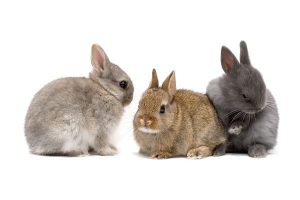
Contents
Overview
Water is essential to your bunnies, and they drink between 50 to 100ml per kilogram of their weight. This amount may go higher or lower depending on several factors including diet, temperatures, and overall health.
Water helps in keeping cell health and integrity, eliminating metabolism products such as urea and electrolytes, keeping mucous membrane moisturized, assist in digestion and fecal elimination, absorb shock in the amniotic sac, spinal code, inside eyes, among many other uses.
Since it has many roles, you cannot afford not to give your bunnies sufficient clean, fresh water every day.
Why not go for manual options?
Whereas you can opt for rabbit water bottles and bowls, if you have many bunnies or you get at times busy, you should consider having an automatic system. This is because having to clean as well as refill the bottles and rabbit crooks or bowls can be tedious. Your work will be straightforward if you consider automatic rabbit feeders and waterers.
Furthermore, keeping the bowls free of molds, slime or bacteria can be a daunting task. Expect algae to grow since they are transparent. Furthermore, they are prone to contamination by bacteria and dirt.
Also, unless you have a backup bottle or bowl, or the caregiver is diligent, it is possible to provide less water than required.
An automatic waterer will resolve all these shortcomings. This is because it consumes less time, is cleaner, has lower chances of contamination, and you can provide your pets with water uninterrupted when compared to manual options.
The cost of acquisition is often comparable to that one of buying bottles and crocks.
Does it have any shortcomings?
The system requires proper planning, routine periodic maintenance, daily supervision, and a source of water. Also, you need proper initial construction, troubleshooting, and periodic flushing and adjustments.
However, all these will not consume as much time as the manual options.
How does it work?
The system is fed with low-pressure water from a common reservoir through pipes to each rabbit’s cage and connected to rabbit water feeders or nipples.
These nipples, which have valves must be placed at correct heights for rabbits to be able to drink the water by licking or nibbling the pivoted rod (stem) which works as a lever or an actual valve.
The licking or nibbling will make water flow into the bunny’s mouth, and once they are done drinking, the stem which has a spring returns to position, closing the system to avoid leakages and contamination.
Ensure the pressure is low, at “not more than 4 pounds of water per square inch (0-4 lbs. psi)” as Kwcages.com notes. This can be achieved by regulating the elevation height for a reservoir tank or through the use of ultra-low-pressure regulators if you have a closed system. Try brands like Renator M11-0660R Water Pressure Regulator Valve.
Homemade heated rabbit waterer and supplies
Whereas there is an option to search for an automatic rabbit waterer for sale and settle for the one that suits best your needs, you can opt to make your own at home by getting a few supplies. It is an easy task.
Rabbit watering system supplies
The exact supplies you get might slightly vary depending on how you go about making yours. However, some of the common ones that you need included me.
- ⅜″ by ¼″ flexible, opaque vinyl or PVC pipes to discourage algae growth. A brand like ATP Value-Tube LDPE Plastic Tubing, Black, ¼" ID x ⅜" OD is ok.
- A resource tank that can have an automatic float valve (like the one used in toilets) or be semi-automatic where you must refill.
- A micronic filtration if you want to deliver clean water either with a cartridge filter type or a strainer one.
- The feeders (have nipples, Ts and holding springs) or automatic water nipple drinker feeders or rabbit watering nozzle. 20 Sets of Gravity Feed Water-Rabbit Nipples w/Adjustment Tool is a good brand you can buy.
- Clips for holding you tubes
- ⅜″ by ¼″ brass barb that attaches to a ½″ by ⅜″ brass hex bushing that connected the ½″ watertight zinc conduit hub inserted from inside the reservoir tanks. These are used on your reservoir after drilling a hole in
Tools you will require
- Drill
½-inch drill bit
Petroleum Jelly or Plumbing Tape (optional)
Here is a tutorial that can help you get an idea of how to go about the whole thing. We do not intend to go to details. Note that, depending on how you decide to make yours, small variations may be expected. You will also notice some differences in this video.
The layout will depend on where your cages are and how they are arranged. The best way is to get one pipe from the reservoir tank to the closest cage then channel from its header in a row, covering all the cages on that row.
Rabbit watering system winter
During winter, to avoid this automated system for rabbit hutches from freezing, consider having a thermostat-controlled heated water recirculation system to help heat up the water.
This may require a submersible aquarium heater and a pump to help recirculate the water and ensure it does not freeze and insulating your pipes to reduce heat loss.
Alternatively, you can ensure your reservoir and bunnies are in a temperature-controlled room.
Troubleshooting and maintenance
Once you have completed assembly, open valves to drain to each end to allow air to escape. Do the same to each of the nozzles. Also, check for any leakages.
Once in a month open the drain valve on the end of each line to let it flush removing any debris. If the nozzles develop mineral buildup, soak them in a vinegar solution overnight.


Leave a Reply
You must be logged in to post a comment.